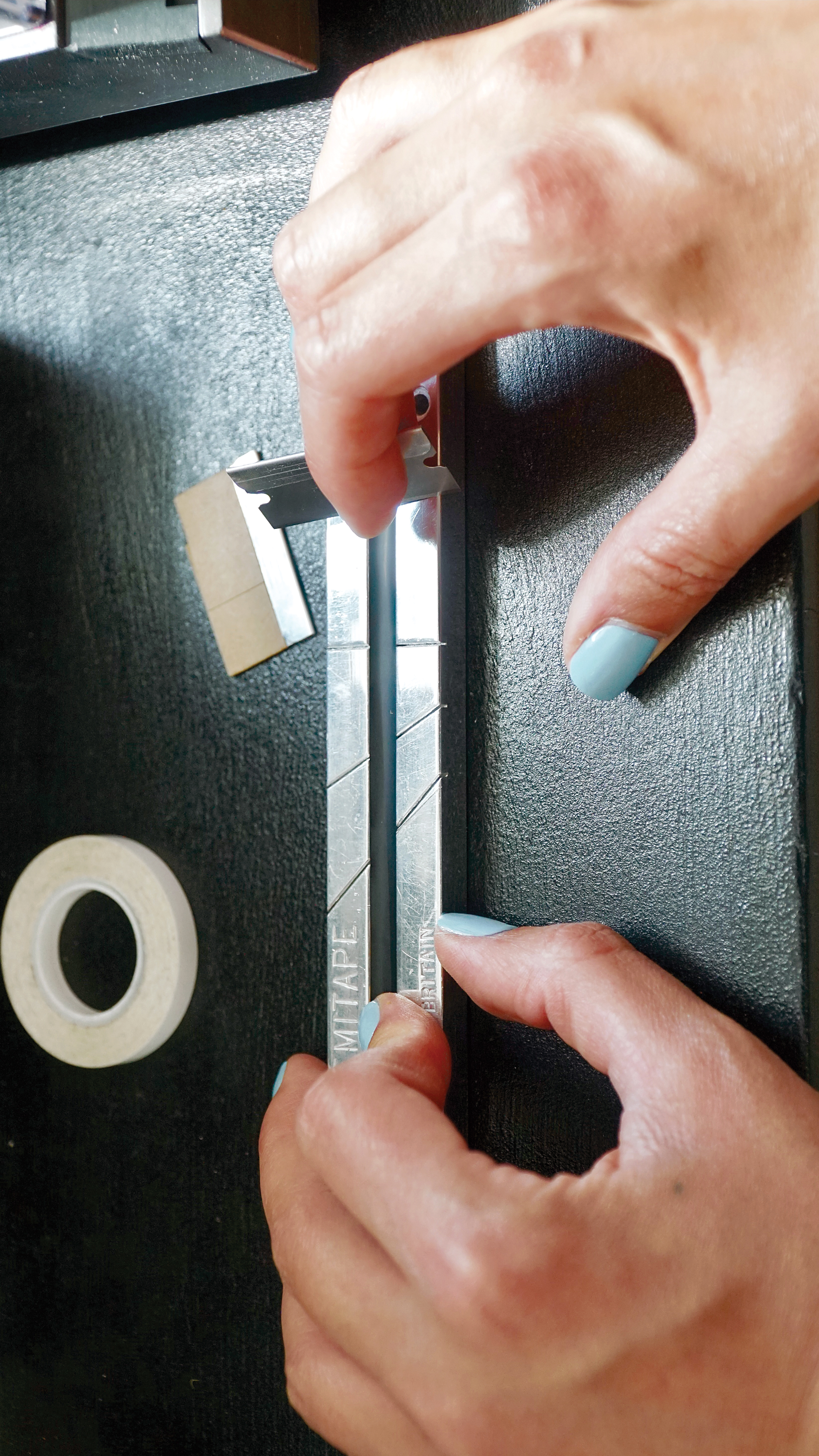Like many home recordists, I work out of the smallest bedroom in my house: a glorious 10 x 10 x 8-foot room. Palatial, it is not. My “control room” dimensions would reduce even the hardiest acoustic consultant to tears. After a few frustrating experiences of working up a decent mix, only to hear it collapse on other speakers (especially when I tried to impress my bandmates), I’ve developed a host of workarounds. Witness me haphazardly moving DIY sound panels into the room at critical mix stages (the panels normally live in the live room) and, second, checking mixes on Audio-Technica ATH-M50 headphones [Tape Op #63] and in our family station wagon. I made peace with my far-from-perfect setup, reassuring myself that “close enough” would have to do since I wasn’t running a commercial studio. Settling on my monitors also freed up my modest budget for sexier items, like outboard EQs and compressors.
Even though I wasn’t seeking new monitors, I readily agreed to review the new ADAM Audio A7V 7-inch active nearfield monitors because I loved my experience when tracking and mixing on a larger set of ADAM P22A monitors [Tape Op #59] at Panoramic House Studio. I remember those being accurate without sounding harsh in the high frequencies – the A7Vs employ a similar X-ART (eXtended Accelerated Ribbon Technology) tweeter that offers that same vibe. When I first received the A7Vs, I swapped them into my current setup and returned to work. I immediately noticed greater detail in the mids and low end, allowing me to better balance kick drum, bass, and guitars. As expected, the high frequencies were accurate without sounding harsh, making long days behind the desk a much more appealing proposition.
After a Zoom session with the kind folks at ADAM, I realized I was missing half of what these monitors offer. For example, the videos and training materials on the ADAM website revealed why my previous mixes always sounded a bit thin: I was hearing a boost around 200 Hz in the control room because my monitors were sitting on the desk. This alone convinced me to order proper monitor stands to decouple the monitors from my mixing desk. But after talking to the folks at ADAM, I recognized that my journey would require further stops. One of the strengths of the new monitors is that they can be tuned to compensate for other less-than-stellar room characteristics as well. But with a shaky understanding of acoustics, I was afraid to tune the monitors – what if I made a bad situation even worse? I decided it was time to measure my room. Using Sonarworks Reference software [Tape Op #131], I confirmed that my bedroom acoustics were less than perfect and especially poor in the low frequencies. Instantiating the Sonarworks plug-in on the mix bus of my Pro Tools session, I was able to adjust for my small room and hit on a much better sense of what my mixes sounded like elsewhere. This process was less painful than I thought it would be, and I recommend it to other home recordists who must balance their desire for proper mix translation and the reality of limited space, not to mention budgets that also include groceries and veterinary bills.
Feeling less timorous about my new setup, I decided to track some bass parts in the control room. The trouble I ran into is that the Sonarworks plug-in introduces some latency. It was only then that I began to understand the cool things that the ADAM Audio folks had told me earlier – the A7Vs have internal DSP that can hold your Sonarworks SoundID, thereby obviating the need to run Sonarworks as a plug-in on your master bus. Once I acquired a simple network splitter and three Cat 5 Ethernet cables, I could use ADAM’s A Control software to load the Sonarworks SoundID profile directly onto the monitors. And if – like me – you are wary of running yet another computer program in the background as you record and mix, get this: Once a user loads the SoundID onto the monitors, they can unplug everything and close the A Control software! The monitors will remember the previous settings. Additionally, if you are still unsure about room correction, simply hit a button on the back of the monitors to switch back to a flat EQ. Then, once you get your bearings, you can leap back to the tuned version with another button tap – very cool!
The ADAM A7Vs are lovely monitors, balancing accuracy with high frequency reproduction that won’t shred your ears. Despite brandishing slightly smaller woofers than my old monitors, the A7Vs’ MLM (Multi-Layer Mineral) woofers produce clearer and more extended low frequencies. The additional detail I can now perceive in the mids allows me to sculpt stacks of guitars more effectively, and the high frequencies are sweet yet truthful. The success of any monitor hangs on its ability to reveal the nuances of your mix. The A7Vs conjure critical detail that proved elusive in the past, allowing me closer proximity to a mix that translates well. When you add the ability of the A7Vs to compensate for troubling room acoustics, you’ll appreciate how these are a big step up for home recordists and small studios alike. If a commercial studio wanted to add a pair of nearfields, I wouldn’t hesitate to recommend the A7Vs. Given my inability to imagine mixing without them, I’m buying my review pair.




_disp_horizontal_bw.jpg)